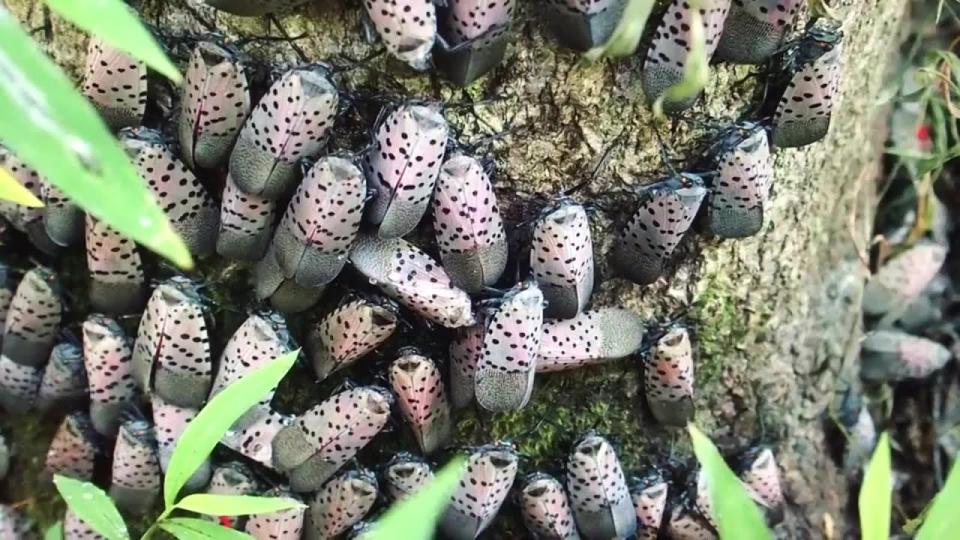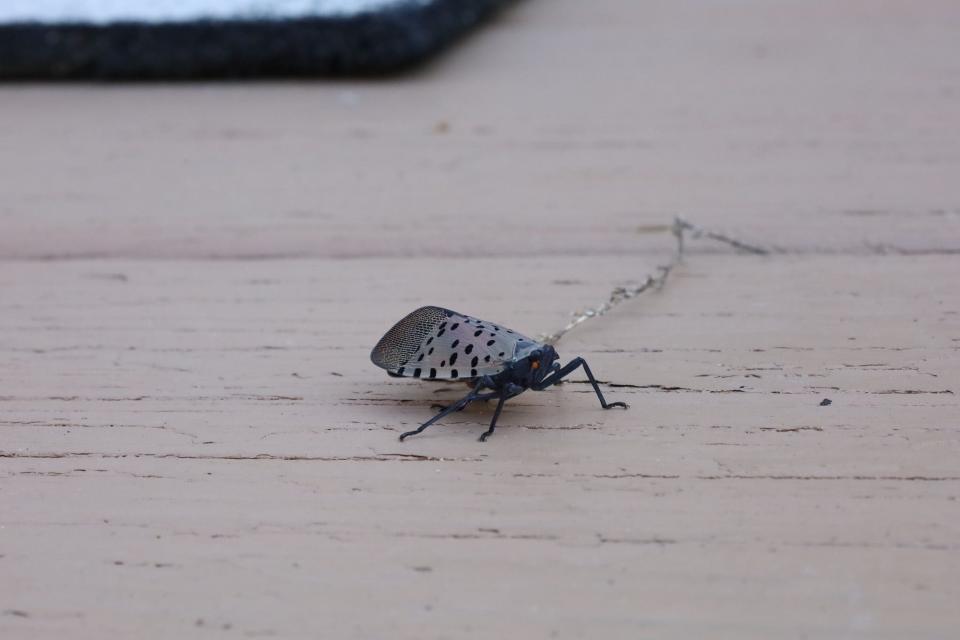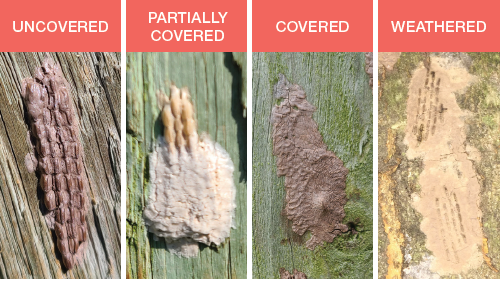Has the spotted lanternfly made its way to Somerset County? Here's what we know.
Somerset County’s agricultural community is keeping an eye out here for the adult spotted lanternfly, and they hope area residents will do so, too.
“For every adult spotted lanternfly we kill (now), there will be 40 to 50 less spotted lanternflies next year,” said Barbara Landis, Somerset County master gardener coordinator for the Penn State Extension.
“We don’t want people to panic, but to be vigilant; the reason why they should be vigilant is because we want to curb the spread of the spotted lanternfly as much as possible.”

In July and August, numerous news reports and social media posts have documented hundreds, even thousands, of adult spotted lanternflies around Pittsburgh and nearby cities, including Monroeville and Greensburg.
Lanternflies in western PA: Spotted lanternflies return to Beaver County, residents encouraged to avoid home remedies
That may pose concerns for Somerset County this fall, as these pests are notorious hitchhikers, traveling from place to place on automobiles, recreational vehicles, commercial vehicles and railroad cars, for example.
Once they arrive in a new location, the spotted lanternflies look for a place to feed – and some of their favorite food sources are maple trees, grapevines and fruit trees, all of which are important to Somerset County’s agriculture. Their feeding puts additional stress on these plants, which can cause serious damage and even death, according to the Pennsylvania Department of Agriculture.
The adult females also lay their eggs in the fall (September through November) on many outdoor surfaces. One spotted lanternfly egg mass can contain 30 to 50 eggs, and the eggs are laid in vertical rows on trees, decks, houses, outdoor furniture and equipment, picnic tables, rocks, cinder blocks and many other places.
As the temperatures get colder, the adults die off, but the eggs they’ve laid in the fall will survive over the winter and hatch next spring, bringing out thousands of the pesky pests to contend with again next year.
Scaling the heights: Grandfather-grandson travel to top of tallest structure together
Where have they been seen in PA?
In January, the state Department of Agriculture added Somerset County to the state’s spotted lanternfly quarantine list, which means that a reproducing population of adult spotted lanternflies was reported here in 2022, Landis said.
In addition, the quarantine requires that, with few exceptions, any business or organization that moves products, vehicles or other items into or out of the quarantine area must have a permit and inspect their vehicles and shipments to avoid transporting spotted lanternflies to other areas. More information about the quarantine regulations is available at the state Department of Agriculture’s website.
Prior to 2023, there were 45 Pennsylvania counties in the quarantine area, Landis said. Six more were added in 2023, including Somerset and Fayette counties. Currently, only Greene County in the southwest and 15 of the most northern counties of Pennsylvania are not included in the quarantine.
“We knew at some point that we (Somerset County) would be added, it was a just matter of time,” Landis said.

Why should we be concerned?
A study by Penn State University estimates that, if not controlled, the spotted lanternfly could damage the state’s economy by as much as $324 million per year, especially affecting businesses that depend on healthy trees, grapevines and plant stock.
Lowell Friedline and his family produce maple syrup each year from about 1,200 taps at Walnutdale Maple Farms, near Boswell. He said they haven’t seen any of the adult spotted lanternflies yet, but they are keeping a close eye on their trees.
“Yes, we have been on the lookout for lanternflies but thus far we haven’t spotted any,” Friedline said in an email to the Daily American. “We presume that it is simply a matter of time before they begin showing up.”
Their biggest concern right now, he said, is the invasive spread of the Tree of Heaven, an ornamental shade tree that looks similar to a black walnut tree. Unfortunately, the Tree of Heaven is also the spotted lanternfly's favorite hangout.
“In our case, the Tree of Heaven and black walnut saplings are intermixed and are very similar in appearance,” Friedline said. “The Tree of Heaven is very difficult to eradicate, but we do welcome black walnut trees. There are herbicides available that will kill Tree of Heaven, so which trees do we treat?
“In my lifetime, the county has lost the American Chestnut, the elm tree and the ash tree, all due to invasive infections or insects.”
For more information on how to identify the Tree of Heaven, visit the Penn State Extension’s website.
A successful show: Youth exhibitors take home top placings at Somerset County Fair
How to spot and kill a spotted lanternfly
Fortunately, the adult spotted lanternfly and its progeny are relatively easy to identify and eliminate, without the use of potentially dangerous chemicals or homemade concoctions.
The adult spotted lanternfly has grayish wings with black spots and a set of bright red inner wings that are visible when the outer wings are open.
“They follow humans, so they’re most likely to be seen where there is a higher density of people,” said Glen Bupp, Penn State Extension Educator, Horticulture. “Look for them around ornamental trees and in parking lots, in higher populated areas. It would be good for everyone to look out for them, especially if you’re traveling out of a quarantine area.”
It's also a good idea to look around your vehicle, camper or RV before and after driving, especially in a quarantine area. Spotted lanternflies do not sting or bite, and they typically get around by jumping or they may flutter, because they’re not very good fliers, Bupp said.
The Pennsylvania Department of Agriculture says the best way to get rid of the adult spotted lanternfly is to kill it by swatting or stomping on it. They also ask that residents report where they’ve seen and killed spotted lanternflies at 1-888-4BADFLY or use the agency’s online reporting tool.
A spotted lanternfly egg mass looks like a mud splatter or blob of putty on tree bark or any smooth outdoor surface, including rocks, outdoor furniture and picnic tables.

To destroy the eggs, the U.S. Department of Agriculture recommends that people either crush the egg mass thoroughly or use a plastic card or a putty knife to scrape the mass into a zipper-top plastic bag that has some rubbing alcohol or hand sanitizer inside. Make sure the eggs are coated with the liquid inside the bag, then dispose of the bag in the trash.
Good news: Drought watch lifted for Somerset County, remains for 20 others
Experts don’t recommend, however, that people try the various homemade remedies circulating on social media or use ladders to reach egg masses laid higher up in a tree.
“We don’t want people using homemade concoctions to kill them that might be harmful to them or to the environment,” Bupp said. “Reach out to the Penn State Extension or do research online to find out the best way to take care of them.”
Landis said that Somerset County’s master gardeners have been handing out information at the fair and other events in the county this summer to educate the public about the spotted lanternfly.
“The spotted lanternfly is on everybody’s mind right now,” she said.
“We’ve been hearing from people that they’re finding one here and there. We need to encourage people to look for them and call in or report them at the (state Department of Agriculture’s) website.”
This article originally appeared on The Daily American: Somerset County's agriculture community watching out for adult spotted lanternfly

